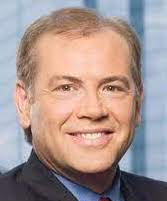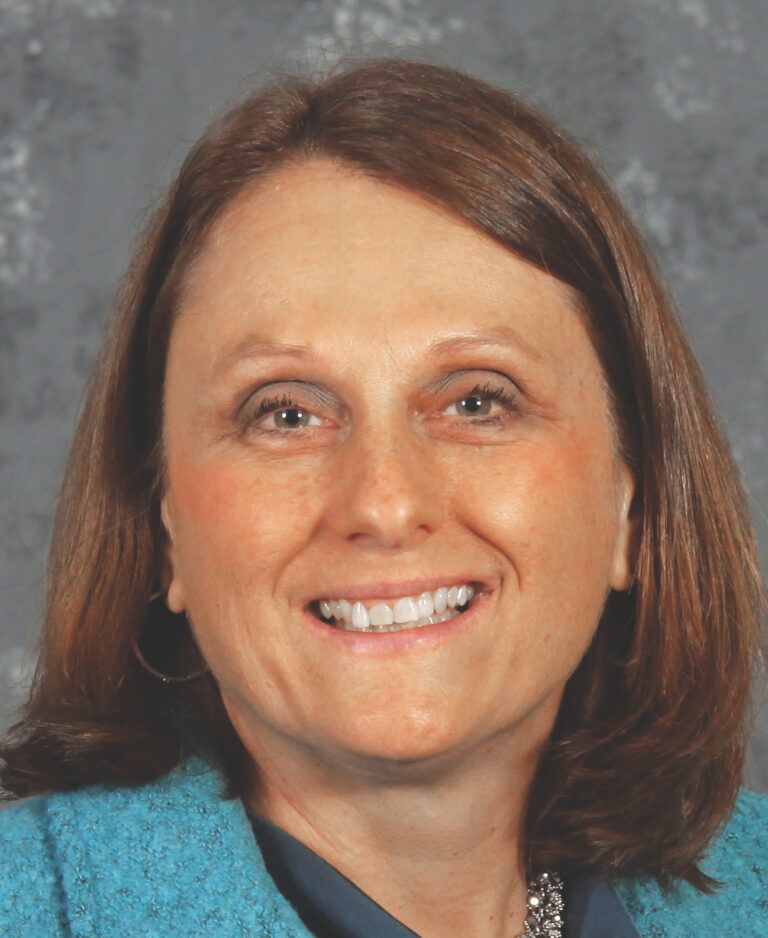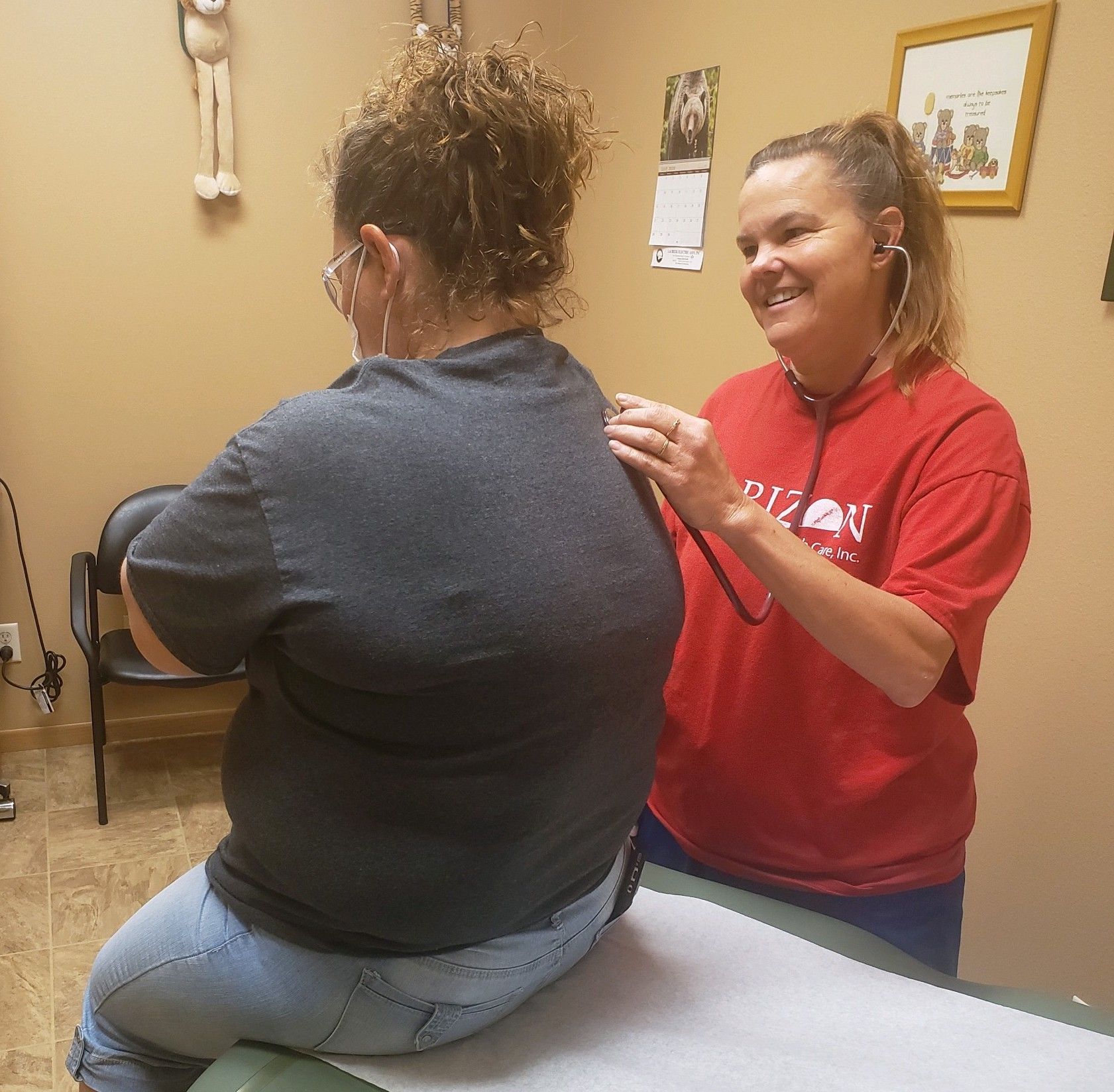Update: One ballot measure dropped in wake of News Watch story
On July 11, Dakotans for Health co-founder Rick Weiland withdrew Initiated Measure 28 from the November ballot and announced that his group will join South Dakotans Decide Healthcare in pushing for the passage of Constitutional Amendment D. Both coalitions have the same aim of expanding Medicaid in South Dakota, but organizers expressed concern about voters being confused by having two measures on the ballot or viewing them as competing objectives. The deadline to withdraw from the ballot was July 12.
“We look forward to passing Amendment D and ensuring hard working South Dakotans can access the affordable health coverage they need,” Weiland said.
Some advocates for Medicaid expansion in South Dakota are concerned that two ballot measures with different language and separate backers but the same goals may confuse or diffuse voters, reducing the chances of success in the November election.
The goal of each campaign is to provide health care coverage to more than 40,000 additional low-income South Dakota residents by broadening Medicaid insurance criteria as established by the Affordable Care Act, with the federal government covering 90 percent of the cost. Unlike Medicare, which provides coverage for the elderly, Medicaid focuses on low-income individuals and covers services such as hospital visits, preventative care, X-rays and family planning.
The ACA in 2010 expanded Medicaid to include nearly all adults with incomes up to 138% of the federal poverty level, which currently translates to an annual salary of about $18,000 for an individual (or $36,500 for a family of four). But the Supreme Court ruled in 2012 that states could reject the expansion and still get federal funding for traditional Medicaid costs, which all states currently receive.
South Dakota is one of just 12 states that hasn’t expanded Medicaid, making it an outlier even among neighboring Republican-led states such as North Dakota, Iowa and Nebraska. But expansion proponents are optimistic after seeing voters reject Amendment C – which would have made ballot measures involving state spending more difficult to pass – in the primary election June 7 with 67 percent of the vote.
Constitutional Amendment D, which is sponsored by South Dakotans Decide Healthcare and will appear on the November ballot, seeks to expand Medicaid by changing the state constitution, viewed traditionally as a more iron-clad method of initiating new policies. Amendment D is supported by the state’s major healthcare systems and the Fairness Project, a national advocacy group that assists in ballot measure campaigns.
The second Medicaid ballot measure, Initiated Measure 28, is spearheaded by former Democratic U.S. Senate candidate Rick Weiland, a frequent supporter of ballot measures who successfully campaigned to increase South Dakota’s minimum wage in 2014. Weiland’s group, Dakotans for Health, initially presented its measure as a way to give voters another option in case the 60-percent voting threshold was passed into law by the June primary vote.
“Historically, initiated measures have fared better than conditional amendments,” said Weiland. “There are groups of voters who just don’t like to mess with the constitution and could see Medicaid expansion as more appropriately accomplished by statutory measure.”
Since Amendment D had a later filing deadline to the Secretary of State’s office, the fiscal note from the Legislative Research Council includes additional offsets extended by the Biden Administration as part of the American Rescue Plan, showing the state’s share over the first five years of Medicaid expansion to be a total of $3.8 million. That information is not reflected in IM 28’s fiscal note, nor does that measure specify an implementation date.
These differences – plus the significant financial backing of South Dakota’s “big three” health systems: Sanford, Avera and Monument – lead state Sen. Reynold Nesiba, a Sioux Falls Democrat who supports Amendment D, to call for Weiland to pull Initiated Measure 28 off the Nov. 8 ballot to create a unified statewide effort.
“Rick Weiland and the people bringing the initiated measure need to withdraw it,” Nesiba told News Watch. “It’s got an inferior fiscal note attached to it, it doesn’t have an implementation date, and the constitutional amendment will have a more definitive impact.”
Weiland, whose efforts to coordinate a petition-led campaign to pass Medicaid expansion date back to 2019, chuckled when informed of Nesiba’s remarks.

“Give me a break,” said Weiland, who served as an advisor to former U.S. Senator Tom Daschle. “The language in both these initiatives accomplish the same thing, and the implementation date is written into state law. As for voters being confused, there are only three measures on the ballot (the two Medicaid proposals and IM 27, which would legalize recreational marijuana). I don’t think that’s going to be too overwhelming for people.”
If both ballot measures pass and have the same intent, state law dictates that “the initiated measure or amendment receiving the greatest number of affirmative votes at the election shall be given effect.”
That provision could be construed as the measures competing against each other, though their aim is the same. The deadline to voluntarily remove a ballot measure is 120 days before the election (July 12 in this case), but so far both groups are holding firm.
“We are fully focused on campaigning for and passing a constitutional amendment that will expand Medicaid in South Dakota,” said Zach Marcus, a spokesperson for South Dakotans Decide Healthcare.

General agreement on intent
One thing the factions agree on is that chronically underfunded Indian Health Service facilities and rural health clinics and nursing homes will receive a boost from federal Medicaid reimbursements if more low-income patients are covered. In addition to the 90% federal matching rate, states that implement expansion also see an increase in funding for traditional Medicaid populations under COVID-related American Rescue Plan provisions.
In South Dakota, the total cost of expansion over the first five years would amount to about $1.5 billion, of which the state’s share would be $166.2 million, according to the Legislative Research Council. Since total savings to the general fund – from federal matching and incentive funds and fewer reimbursement payments to hospitals for treating uninsured patients – is estimated at $162.4 million over that five-year period, the state’s net financial obligation would be $3.8 million.
“It will cost us less to expand Medicaid than it cost to buy the governor a new airplane,” said Nesiba, referring to the state’s $4.5 million purchase of a 2015 Beechcraft King Air 350 last year. “The failure of South Dakota to take this step is one of the most short-sighted economic decisions we have ever made.”
Under South Dakota’s current (non-expanded) Medicaid system, two-thirds of the roughly 130,000 enrollees are children who meet poverty level guidelines, while eligible adults include pregnant women, elderly or disabled individuals and parents of minor children up to 52 percent of the poverty level (for a household with three people, that means an annual salary of about $11,300).
Childless adults without a disability are ineligible for Medicaid coverage in South Dakota regardless of income level, and many don’t qualify for ACA subsidies to help obtain private coverage unless their income is at least 100 percent of the poverty level.
The number of these residents who “fall through the cracks” of health insurance coverage is estimated at 42,500 in South Dakota, just under 5 percent of the total population. Nearly 40 percent of them are estimated to be Native American, according to Georgetown University’s Health Policy Institute, compared with about 9 percent of the general population that is Native American.
The federal government pays 58% of the cost of standard Medicaid coverage, with slight increases made during the COVID-19 pandemic. Under Medicaid expansion, the federal government share increases sharply, especially with incentives added as part of the American Rescue Plan.
A study of state budgets from 2014-2017 by the Commonwealth Fund, a nonprofit that supports research on health policy reform, found that Medicaid expansion was associated with a 4.4% to 4.7% reduction in state spending on traditional Medicaid while also reducing the cost of uncompensated care, such as when the state reimburses hospitals for services provided to uninsured individuals.
Deb Fischer-Clemens, Avera Health senior vice president for public policy and a supporter of Amendment D, said that expanding coverage to uninsured residents helps not just those individuals or families but also entities that might incur those costs down the line, including state or county government, non-profit health systems or taxpayers.
“There’s a lack of preventative care when you don’t have insurance,” said Fischer-Clemens, a former state legislator who also serves as president of the South Dakota Nurses Association. “When you don’t have a lot of money, you’re using it all to pay for rent or groceries or gas, meaning you’re not getting that preventative colonoscopy. And when you find out there’s something wrong with you, instead of a couple thousand dollars, it’s tens of thousands of dollars, and a lot of time away from work and a lot of debt. The big picture of this is taking care of individuals who don’t have the resources to access care at the appropriate time.”
Medicaid expansion opponents, including GOP Gov. Kristi Noem and Republican Senate President Pro Tempore Lee Schoenbeck, counter that able-bodied individuals, such as currently uncovered childless adults, should be able to work and are not entitled to free health care. They also point to uncertainty about the state’s share of expenses once COVID-related incentives from the Biden administration phase out and the nation’s public health emergency expires, which is expected later this year.
Schoenbeck, who declined an interview request, made his position clear when asked about Medicaid expansion during a Senate primary event in May.
“I don’t happen to support more welfare,” he said.

“There’s a lack of preventative care when you don’t have insurance ... the big picture of this is taking care of individuals who don’t have the resources to access care at the appropriate time.” -- Deb Fischer-Clemens, Avera Health senior vice president and Medicaid expansion supporter
Expansion talks fizzle in state government
In 2016, two years after being re-elected as South Dakota governor with more than 70% of the vote, Dennis Daugaard undertook an effort to expand Medicaid despite lingering rancor toward “Obamacare” among most of his fellow Republicans.
The fiscally conservative Daugaard saw it as a good deal for South Dakota, since the state was already paying in part for Native American residents who couldn’t receive care at reservation IHS facilities because of lack of services or availability. The U.S. Health and Human Services Department agreed to an arrangement where those treated outside IHS facilities would be covered by federal Medicaid matching funds.
The problems Daugaard faced were not procedural but political, as state Republicans balked at expanding the ACA, the outgoing Obama’s signature achievement, and voiced their concerns about government handouts for adults who were able to work and fend for themselves.
The governor convened a Health Care Solutions Coalition, which produced a 2016 report that found the state spent $182 million on health care for Native Americans in fiscal year 2015, about $97 million of which was federal funds and $85 million was state funds. The report noted that “$85 million is more than enough to cover state costs for expansion.”
With legislative action stalled, Daugaard tried unsuccessfully to negotiate a work requirement provision with the federal government. Donald Trump’s victory in 2016 – along with Trump’s proclaimed goal to repeal the ACA – ended what little momentum had occurred, especially after Daugaard met with then-Vice President MIke Pence and discussed the new administration’s repeal strategy, which ultimately failed in Congress.
Fischer-Clemens, who served on Daugaard’s coalition, joined with other hospital officials and health associations to consider a new course, especially after Noem took office following the 2018 election and declared her opposition to Medicaid expansion. Advocacy groups in states such as Nebraska, Oklahoma, Missouri, Utah and Idaho had found success by taking the issue straight to voters with petition-fueled ballot measures, and that became the strategy.
“After seeing so many bills fail in committee over the years, we knew we couldn’t do it with legislative movement,” said Fischer-Clemens. “The philosophy in the Legislature is basically, ‘We’ve done enough with Medicaid, and if the federal government takes dollars away, then it’s going to lead to higher taxes.’ There was nowhere else to go.”
Taking issues straight to ballot
There were some early discussions with Weiland, who was well-versed in the ballot measure process and knew of its pitfalls. After his successful effort to raise the state’s minimum wage in 2014, state legislators voted to exempt workers under age 18 from the required wage, so Weiland and other Democrats referred the law back to voters and won with 71 percent of the vote.
Two years later, Weiland spearheaded an electoral victory for IM 22, which revised lobbying and campaign finance laws while establishing a state ethics commission. But Republican legislators sought a preliminary injunction and later repealed the measure with an emergency clause that ensured it could not be sent back to voters.
Those South Dakota efforts against initiated measures, and delays in Nebraska as Gov. Pete Ricketts sought to restrict the implementation of voter-approved Medicaid expansion for several years, convinced South Dakotans Decide Healthcare and the Fairness Project that a constitutional amendment was the most logical course.
They used paid petition circulators to speed the process and submitted 47,000 signatures last November with the Secretary of State’s office, announcing in January that the proposal had qualified for the November 2022 ballot officially as Amendment D.
“We had seen some of the things that the legislature does with initiated measures,” said Fischer-Clemens. “Then some of us watched what was happening in Nebraska and basically said, ‘We don’t want to go through that – we’re not going to live that long.’ In the end we were more confident that we could reach our goal with a constitutional amendment.”
Weiland, however, points to Amendment A, the South Dakota recreational marijuana effort that passed with 54% of the vote in 2020. Noem’s administration challenged the measure, saying it violated the state’s requirement that constitutional amendments deal with just one subject, and won a 4-1 decision at the South Dakota Supreme Court that prevented legalization from taking place.
That single-subject clause had been a response to IM 22, meant to discourage sweeping voter-based changes to state law. When it became clear that Medicaid expansion would be on the ballot in 2022, Sen. Schoenbeck tried to orchestrate a preemptive strike with Amendment C, which was backed by the Koch Brothers-funded Americans for Prosperity and would have required a 60% vote for ballot measures that raise taxes or spend $10 million in general funds in their first five years.
The resounding failure of Amendment C was viewed by some as a message from voters to lay off the petition process, which Weiland interpreted as a potential buffer for initiated measures as well. He noted that state Sen. Wayne Steinhauer, R-Hartford, who chairs the Senate Health and Human Services Committee, led an effort during the 2022 legislative session to endorse or prepare for Medicaid expansion, a proposal that fell short but indicated a desire to get out in front of voter-backed measures. Steinhauer did not respond to an interview request.
“I think state legislators realize that they’re on thin ice when it comes to messing around with the will of voters,” said Weiland, whose group’s measure was certified June 9 by the Secretary of State’s office with 17,249 valid signatures (the threshold is 16,961). “We have a chance to hold their feet to the fire, because they mis-stepped on minimum wage, they mis-stepped on corruption, they mis-stepped on cannabis and they’re getting tired of mis-stepping. This whole notion that the only way to get things done is through constitutional amendment is not really the case anymore. I hope they both pass. We’re encouraging people to vote for both.”

Finding support for Native populations
One of the most persuasive arguments for expanding Medicaid is its ability to address long-standing health care concerns that plague tribal communities in South Dakota, which has the fourth-highest percentage of Native American residents in the country.
A 2021 study by the Health Policy Institute at Georgetown found several predominantly Native counties (Buffalo, Oglala Lakota, Todd) with at least four times the national average of uninsured non-elderly adults.
Remi Bald Eagle, a member of the Cheyenne River Sioux Tribe who is part of the Dakotans for Health group, pointed to the limitations of IHS services on reservations and noted how Medicaid expansion could improve the level of care.
Some Native residents don’t live close to an IHS facility, or they require services that aren’t provided. Expanding Medicaid would allow those patients to be referred to other hospitals or clinics, which would then be reimbursed. Currently, referrals are determined by a “triage” system, meaning cases are prioritized by level of medical severity.
“IHS facilities have a capped budget they operate under,” said Bald Eagle, a former Democratic candidate for public utilities commissioner. “If a person’s condition is not seen as high priority, that person might not get referred.” He added that third-party billing through Medicaid expansion could potentially help IHS facilities expand services or upgrade medical personnel.
Among Native Americans with IHS access, Medicaid enrollment increased by 45% in expansion states and 25% in non-expansion states from 2010 to 2018, according to the IHS Tribal Self-Governance Advisory Committee.
Montana, which approved Medicaid expansion in 2016, saw more than 15,000 tribal members newly enrolled in Medicaid in the first two years, according to the state Department of Public Health and Human Services. The tribal and IHS facilities on the Blackfeet Reservation in northern Montana saw an additional $13.6 million for services reimbursed by the federal government during that time.
Bald Eagle supports the initiated measure but said both proposals are encouraging to many in South Dakota – not as government handouts, but as ways to address problems that low-income residents and health providers have faced for a long time.
“It’s unfortunate that this life-saving issue has turned into a political bogeyman that people can use as a scare tool,” he said. “The more people you have using these services, the more it helps everyone, not just Indian Country, but South Dakota as a whole.”



